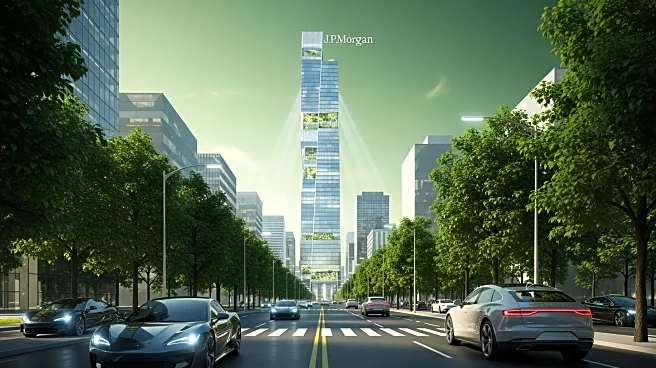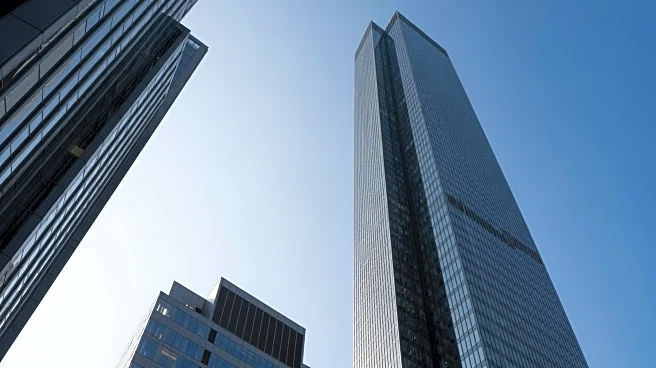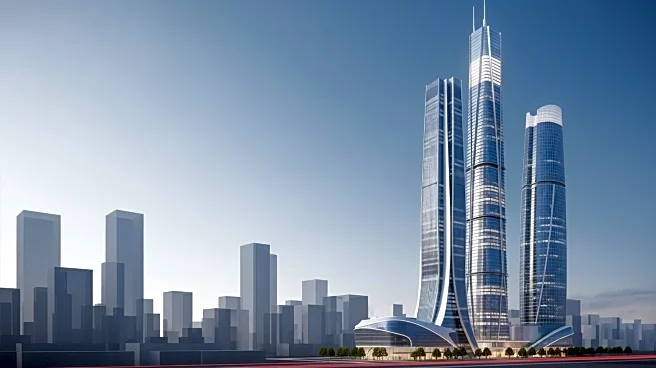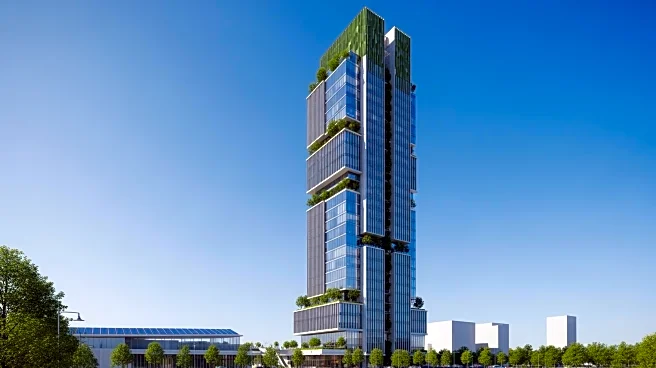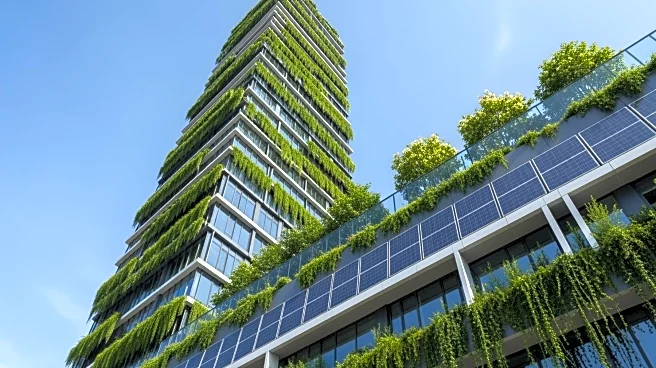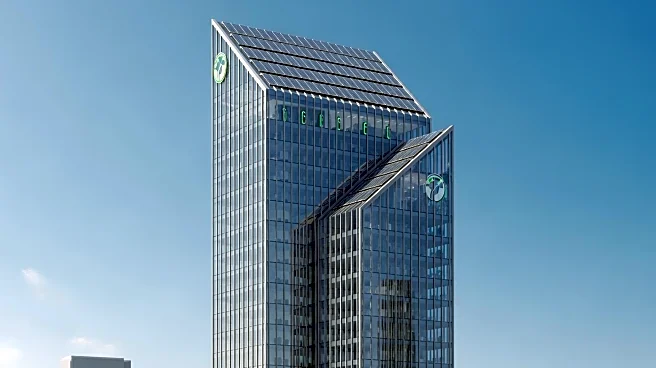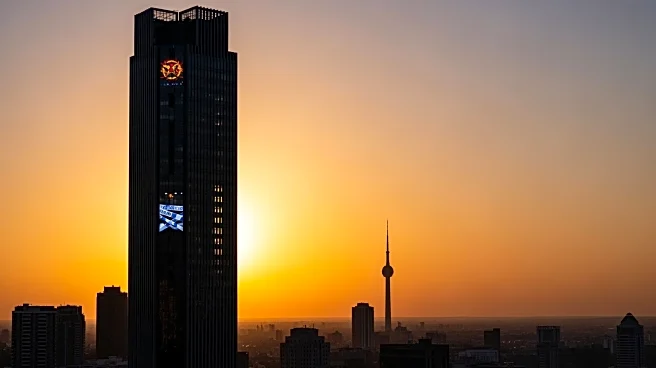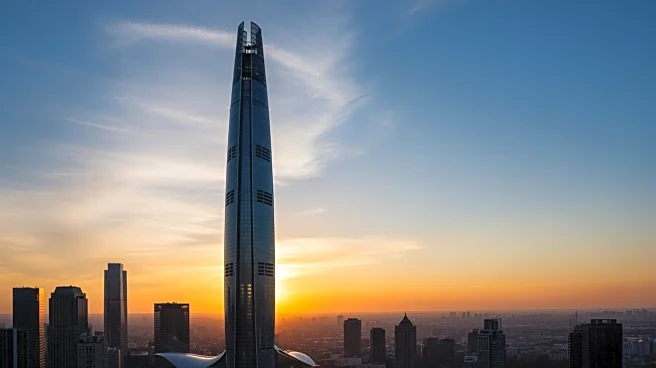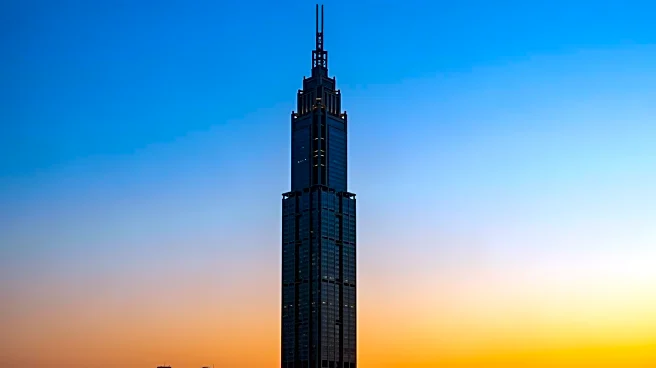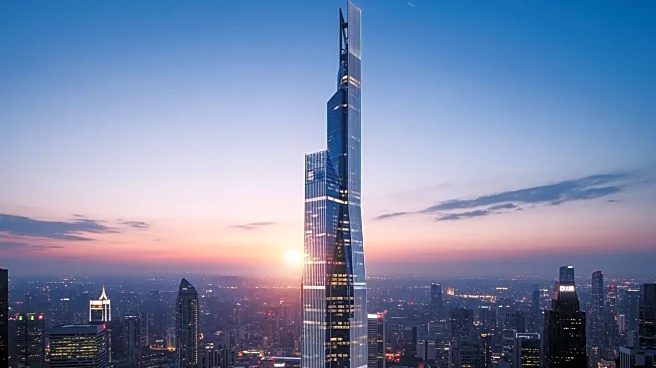What's Happening?
JPMorgan Chase has inaugurated its new headquarters at 270 Park Avenue in New York City, marking a significant milestone in sustainable architecture. The 60-story skyscraper, designed by Foster + Partners, is the tallest all-electric building in the city,
powered entirely by renewable energy from an upstate New York hydroelectric plant. The building spans 2.5 million square feet and accommodates 10,000 employees. It features advanced sustainability measures, including a water storage system, triple-pane glazing, and smart technologies that optimize energy use. The design aims for LEED Platinum V4 certification and WELL Health-Safety Rating, emphasizing energy efficiency and employee well-being.
Why It's Important?
The opening of JPMorgan's new headquarters represents a major investment in sustainable urban development, setting a precedent for future skyscrapers. By utilizing renewable energy and incorporating eco-friendly technologies, the building reduces its carbon footprint and promotes environmental responsibility. This development aligns with broader trends in corporate sustainability, potentially influencing other companies to adopt similar practices. The project also contributes to the revitalization of Midtown East, enhancing public spaces and supporting local economic growth. As businesses increasingly prioritize sustainability, JPMorgan's headquarters could serve as a model for integrating environmental considerations into large-scale urban projects.
What's Next?
The completion of JPMorgan's headquarters may prompt other corporations to consider similar sustainable initiatives, particularly in urban settings. As the building becomes fully operational, its impact on employee productivity and satisfaction will be closely monitored, potentially influencing future office designs. Additionally, the project's success could encourage further investments in renewable energy infrastructure, supporting New York City's goals for reducing greenhouse gas emissions. Stakeholders, including city planners and environmental groups, may advocate for more stringent sustainability standards in future developments, leveraging JPMorgan's headquarters as a benchmark.
Beyond the Headlines
The innovative design of JPMorgan's headquarters reflects a shift towards integrating architecture with environmental stewardship. The building's emphasis on natural light and air quality highlights the growing importance of health-focused design in corporate environments. This approach not only benefits employees but also aligns with research linking improved air quality to enhanced cognitive function. The project's commitment to recycling and reusing materials during construction underscores the potential for reducing waste in large-scale developments. As urban areas face increasing environmental challenges, such initiatives could play a crucial role in promoting sustainable city living.
